
What the World Needs Now: Peace, Harmony, and Love, Sweet Love

By Margaret Kearns
Sacred lands, historical treasures cherished and protected by the people of Hawai‘i, exist throughout the island chain. All possess special mana (power or energy) and some much more than others. On Hawai‘i Island, one such place is Paleaku Gardens Peace Sanctuary on Painted Church Road in South Kona.
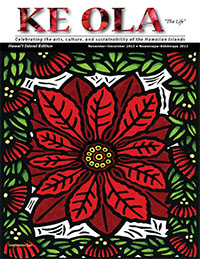
Quietly situated between Kealakekua Bay and Pu‘uhonua o Hōnaunau National Historic Park (once a place of refuge for ancient Hawaiian wrong-doers), the gardens embody deep spiritual mana combined with amazing natural beauty that invites contemplation and creative expression. Visionary and steward of the nine-acre property for 43 years, Barbara DeFranco devoted seven acres for the development of a spectacular botanical garden with numerous plants and trees endemic to Hawai‘i, as well as from countries worldwide. Multi-denominational statues and shrines are mindfully scattered throughout the gardens to illustrate the beauty of all the world’s cultural and spiritual traditions. Exploration, including spiritual studies, she says, is part of life.
The Paleaku Gardens’ mission from day one has always been to create a strong sense of peace and harmony through beauty and balance. Rare flowers and trees share the space with macadamia nut, coffee and citrus orchards, along with more exotic fruit trees planted here from seeds and brought in from around the globe.
“With the help of friends, I found this property more than 40 years ago and knew immediately it had an unique purpose. Because of the historical significance of the land and the topography that exists here, I knew one day it would become a spiritual center—I just didn’t know exactly how,” Barbara, owner and executive director, says.
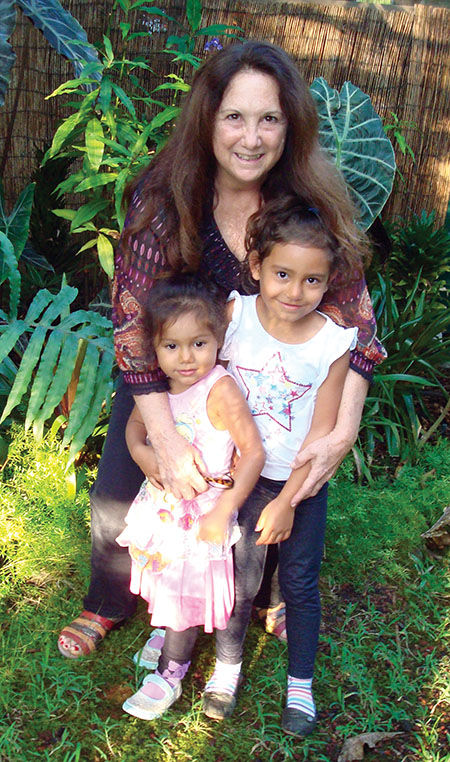
Today, with the help of many like-minded friends who shared her vision and a great Board of Directors, Paleaku Gardens Peace Sanctuary operates as a nonprofit charitable organization offering tours Tuesdays through Saturdays, special events (including weddings), yoga classes and educational seminars year round. Memorials are celebrated frequently at the Sanctuary and participants are encouraged to plant a tree or place a bench in commemoration of their loved one.
‘Ohana (family) was also a “big thing” in the slow and steady growth of the gardens over the years, according to Barbara. “What you see today is the work of five generations—my parents, myself, my daughter, grandchildren, and great grandchildren. It has been 43 years and tons of outreach and neighborhood building. Bringing something as vast as Paleaku and its mission into form is a balancing act that the world has yet to achieve,” the energy-charged 63-year-old says.
“These gardens have been a work in progress for decades,” says Micah Sterrett, sailor turned landscape expert. A 20-year resident of Hawai‘i Island, Sterrett has been cultivating and maintaining the gardens for four years. “It’s a wonderful relationship with nature that comes with challenges, too,” he says. One of his biggest? “Making sure all of these different plants, trees, and florals get along!”
Stepping through the gate to the serene, manicured grounds, visitors are greeted with spectacular coast and ocean vistas stretching from the Captain Cook monument in Kealakekua Bay to the north and the National Historic Park to the south. The gently sloping terrain and beautifully maintained pathways provide easy access to the gardens, grottoes, and the numerous shrines representing all of the world’s major religions, including Buddhism, Hinduism, Islam, Christianity, Judaism, and including Native American and Native Hawaiian. All were designed and built traditionally under the direction of kāhuna, learned scholars, Tibetan priests, visiting swamis, and local friends of the sanctuary.
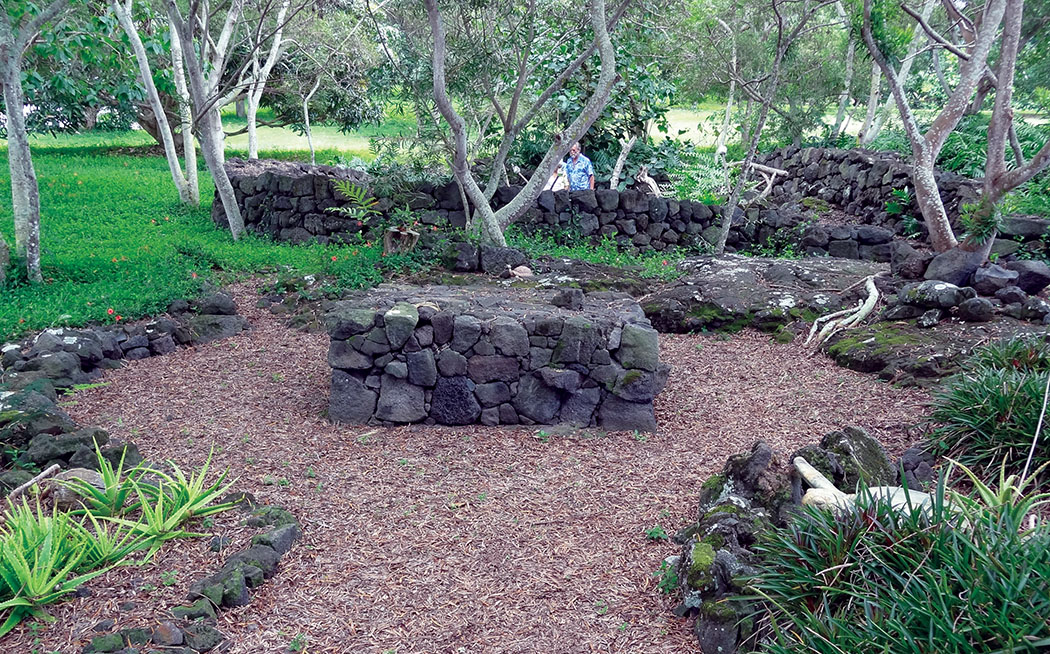
All touch each other in some way, creating a “sacred geometry” or Feng Shui, Barbara says, stressing the fact that Paleaku Gardens is absolutely non-sectarian, a spiritual rather than religious center.
The inclusion of the large walking labyrinth dating back to “pre-Christian” times is another testament to the respect and balance of beliefs exemplified at the gardens.
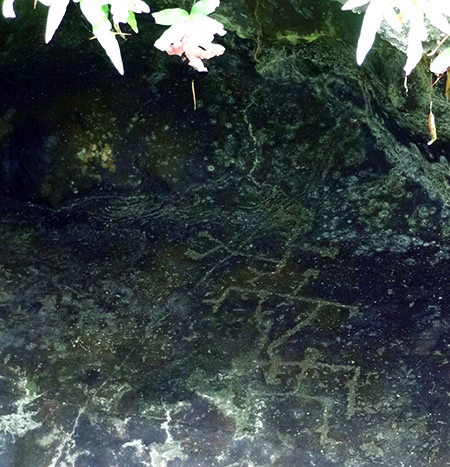
The Hawaiian shrine is a small heiau (spiritual altar) where prayers are traditionally offered to honor the ‘aumākua or guardians of the land at Paleaku. The ‘aumākua are ancestral spirits that take the form of animals and at Paleaku the guides are the ‘io (hawk) and honu (turtle) symbolic of the land, sky, and water being joined here in harmonious arrangement. The shrine sits on a 3,300-year-old lava flow that runs through the property containing lava tubes and natural grottoes. One grotto, adjacent to the Hawaiian shrine, contains petroglyphs (rock drawings) estimated to be 800 years old. The petroglyphs, primarily “triangle people” that depict the lineage of medicine people who are believed to have lived here, are easily viewed from the pathway; entrance into the grotto is strictly kapu (forbidden).
Among the many additional inspirational sites is the Galaxy Garden, the world’s first walk-through model of the Milky Way Galaxy. (See full story in Ke Ola, June/July 2009.) It’s mapped in brightly colored flowering plants and based on current astrophysical data that gives new perspective to “our place in the universe, our community and within our own selves,” Barbara says. “The enormous—and costly—project,” she adds, “was funded by the Change Happens Foundation.”
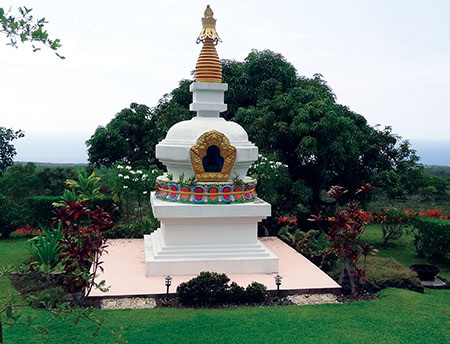
“The 100-foot diameter Galaxy Garden provides a tangible example of earth’s place within the 100,000 light years in diameter Milky Way, which is really an impossible number for any of us to conceptualize,” she says.
The Galaxy Garden was designed by a neighbor as were many of the other installations, and as part of the gardens’ community outreach, Hawai‘i Island schoolchildren were invited to help with the installation of plants and winding pathways that ultimately lead to the Milky Way’s center or black hole. A circular fountain sucks water inward to its center and then spurts it back up and out to depict the action of black holes. Entering the garden, visitors are directed to a leaf with glittering stones (stud earrings!) that mark earth’s place, and illustrates its size, within the Milky Way. Incredibly humbling and enlightening are the two descriptors most commonly heard, according to sanctuary volunteers and staff—huge understatements since astronomers estimate hundreds of billions of galaxies make up the universe!
Visited by scientists and astronomers from the observatories on Hawai‘i Island to NASA, Paleaku Peace Gardens Sanctuary was selected as one of 10 locations worldwide to receive a live uplink to NASA’s website for the Mars landing of Curiosity.
“The live feed of our presentation during Curiosity’s landings is just one example of the many special events that occur here,” Barbara says.
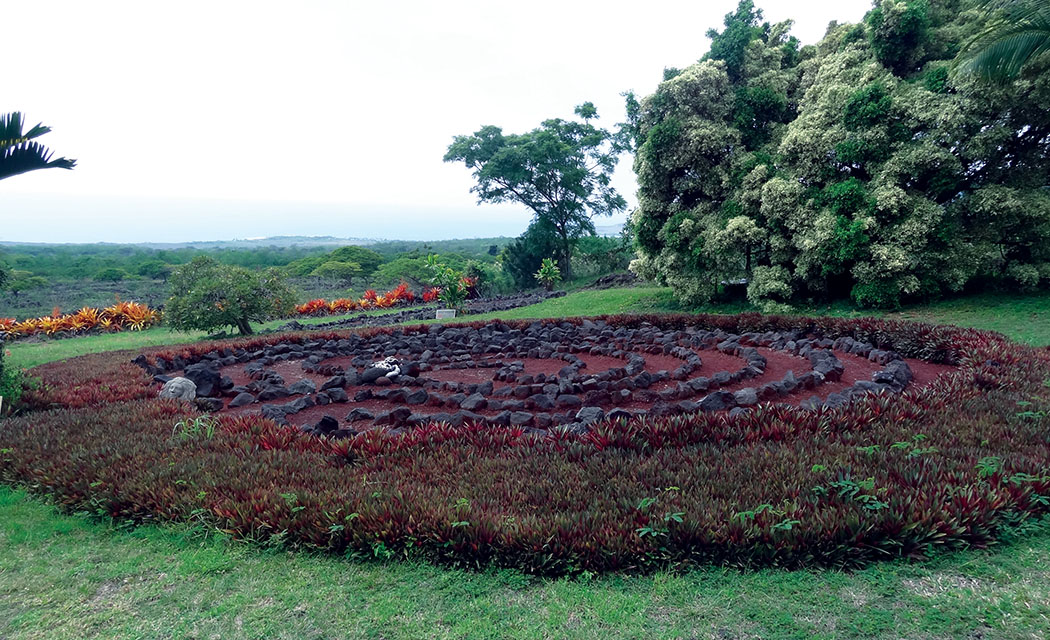
Another was the January 2009 visit by several monks from the Zongkar Chode Monastery that was established in Tibet in 1270 and is now based in South India. They traveled to the sanctuary to create two large sand mandalas—colorful, intricate representations of the Tibetan culture. Taking days of disciplined concentration to build, as one individual sand grain is placed at a time, the mandala is traditionally dismantled by the monks immediately upon completion as a lesson in the impermanence of things in this life. Through special dispensation, the mandalas created at Paleaku, which depict healing and the creation of compassion have been allowed to remain on permanent display.
Barbara shares in the financial support of the nonprofit by managing a retail store—the Indich Collection—in Kailua-Kona, and earlier this year a retail area was added at Paleaku to aid in the sustainability of the gardens. It contains the work of local artisans—painters, jewelers, and wood carvers—along with organically grown fruits, Kona coffee, and macadamia nuts from the gardens and neighboring lands.
“The retail area provides revenues, while allowing us the opportunity to showcase and support our incredible community of farmers and artists,” Barbara says.
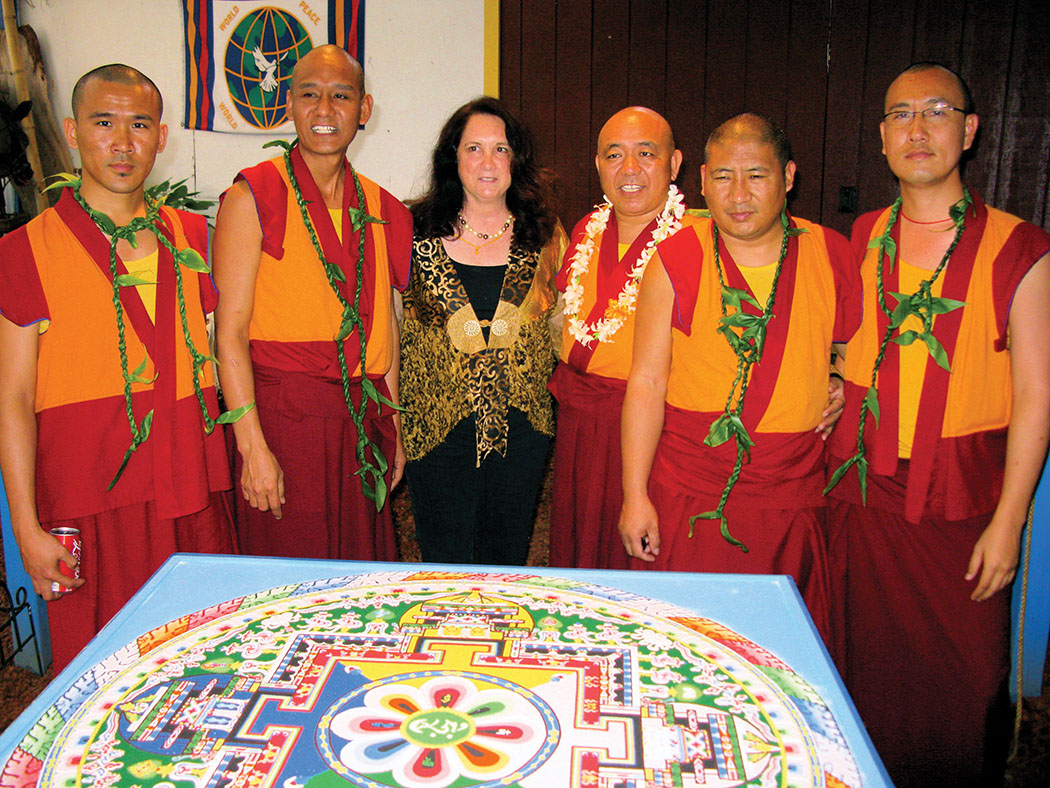
Complementing those retail offerings, a new nursery has been added recently featuring bamboos, palms, garden-statuary, and water plants all sold at wholesale, contractor-direct prices to everyone.
Even with these retail components, donations continue to provide the majority of revenues for maintaining the property and perpetuating its mission.
Late last year, a Special Use Permit application with the County of Hawai‘i was approved for Paleaku Peace Gardens Sanctuary to allow agro-tourism, retail sales, and special events. Along with the permit came large financial burdens of compliance. This includes a new waste water system, upgrades in the buildings, ADA parking improvements, as well as an increase in lease rent requested by Kamehameha Schools.
In order to continue its mission—offering a sanctuary for the advancement of individuals and communities toward peace and harmony—a new membership campaign, “Friends of Peace,” is underway to support the increased expenses. Basic yearly memberships are available, as well as escalating membership levels that entitle donors to expanded benefits. As a 501c3 nonprofit organization, donations are 100% deductible.
In addition to monetary donations, individuals are encouraged to volunteer their time and skills. “We’re also looking for helping hands. Volunteers are always needed,” according to Barbara. ❖
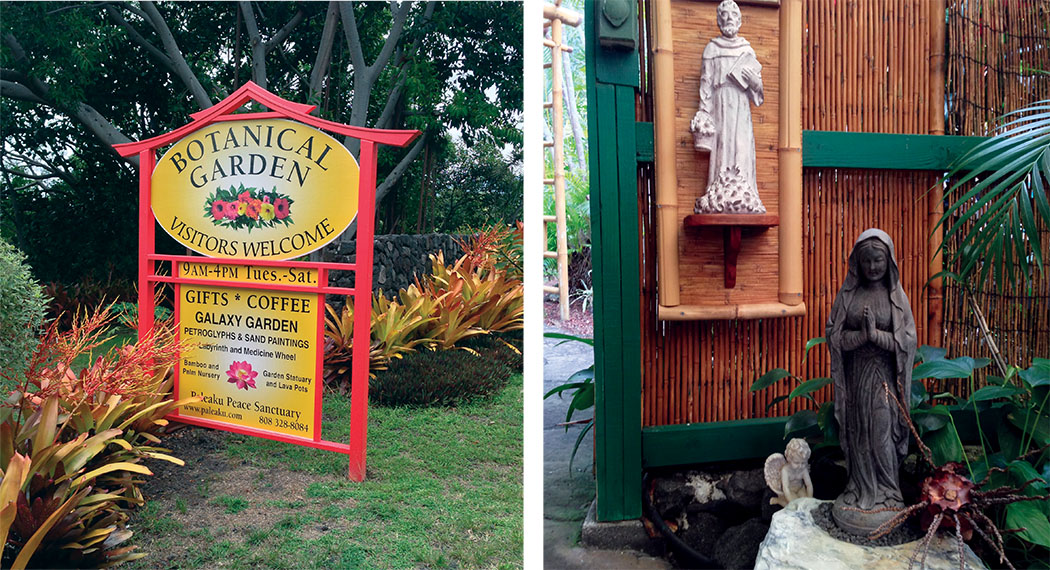 Through a Volunteer’s Eyes: Alana Swoyer, volunteer 2009–2012
Through a Volunteer’s Eyes: Alana Swoyer, volunteer 2009–2012
The Sanctuary is truly a place of peace. When you step through the front gate, you are sheltered by a canopy of red jade vines and welcomed by the vibrant color of their flowers. As you walk through the entryway, you shift into another “space.” The peaceful, relaxing energy of the gardens is palpable as you wander the grounds. A quiet moment expands into a quiet experience of peace.
This was especially noticeable when I witnessed a family or small group enter the gardens. Sometimes there would be one member of the group who lagged behind, not really interested in exploring the grounds. They might appear to be a little agitated, restless, or wanting to be somewhere else. An hour or so later, when that person reappeared at the Visitors Center, their whole demeanor had obviously changed. Their pace more thoughtful, their face relaxed, with a smile emerging. Often they would express how wonderful the gardens were. I saw this over and over again—the “powerful garden experience.”
Visitors frequently told us that Paleaku was the best place they visited while on-island, while local residents came regularly, often bringing off-island guests with them.
One of my most powerful experiences was the privilege I had to participate in the creation of the “Mary Grotto.” This was a heartening project that unfolded over the course of a year. Though I did not have a particular affection for “Mary” in any of her many forms, I was drawn to help with the making of this shrine. I saw wonderful people show up, share their time, their particular talents and provide physical materials to the process—and a process it was! From the initial conversations Barbara had with Jane Hendrickson, an artist and visionary from Arizona, creation of the multi-leveled base, seating area and protective roof, to the installation of the hand painted statue of Our Lady of Guadalupe, and the ceramic rose-making sessions—all efforts showed how many hands can come together to create a space for attuning to the mana, in all its myriad forms.
For more information or to make a donation: Paleaku.com Tuesday–Saturday, 10am–4pm
Photos by Renée Robinson, Jay Chambers, Barbara DeFranco
Contact writer Margaret Kearns: margaretekearns@gmail.com


